Remembering the Big Four looks back at the four railway companies – the London, Midland and Scottish Railway(LMS); the London and North Eastern Railway (LNER); the Southern Railway (SR); and the Great Western Railway (GWR) – that 100 years ago brought together over 100 smaller companies, many of them inefficient and in some cases having overlapping operations.
Published in November 2022 by The History Press and written by Paul Hurley and Jeremy Suter, this soft-cover book published in landscape format measures around 24.6 cm x 22.4 cm, has 168 pages and has 50 black-and-white illustrations. It has a published price of £25 but can be obtained from Amazon for £16.55 by clicking here.
I am surprised that other authors have not taken the opportunity to celebrate the Grouping of Britain’s railways into the Big Four in 1923. However, that omission does not detract from the excellent selection of photographs that have been compiled by Paul Hurley and Jeremy Suter, with many of them dating from before 1923.
The captions tell us a great deal about the subjects with an interesting insight into the background of the locomotives and the locations where the photographs were taken. The landscape format of the book allows larger illustrations than portrait presentation, whilst its soft cover lends itself well to being able to thumb through the volume at any opportunity.
Although not a criticism, I was surprised that the order of presentation did not follow the numerical ordering of the locomotives by region that came about after nationalisation in 1948, which would have seen Chapter 1 devoted to the Great Western Railway with its locomotives carrying four-digit numbers, through to the London and North Eastern Railway with its locomotive numbers in the series 6xxxx. However, that should be balanced by the fact that at the grouping there was no rationality for the numbering between the different railways.
There are a few minor errors, but they do not detract from the overall quality of the book. Most of the photographs are well reproduced with plenty of detail, whilst the selection of photographs should satisfy the most-demanding railway enthusiast.
There is no doubting the Midland Railway pedigree of the loco on the left below, although its 4-2-2 wheel arrangement didn’t last into LMS days, unlike the Class 4P on the right which lasted until 1952. The 4P 4-4-0s were compound locomotives, which I am surprised the authors haven’t mentioned in their caption.
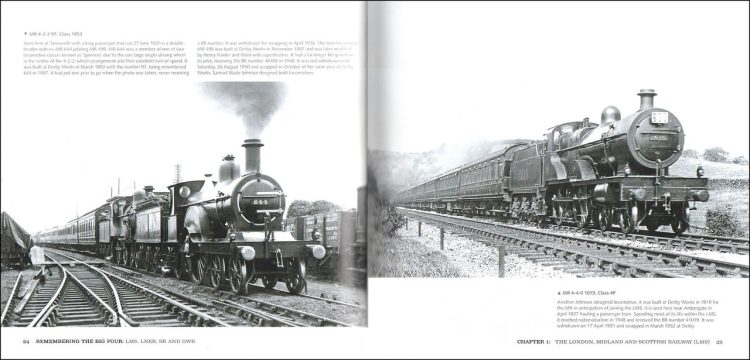
Befitting its place as the last entry in the London, Midland and Scottish section is the Coronation Class Pacific seen on the left below. The right-hand page introduces the London and North Eastern Railway section, and like the other sections in the book, a short introduction lists the constituent companies that were absorbed into the company at the Grouping. The photograph on the right depicts an ex-Great Central Class C5 locomotive that was scrapped before Nationalisation.
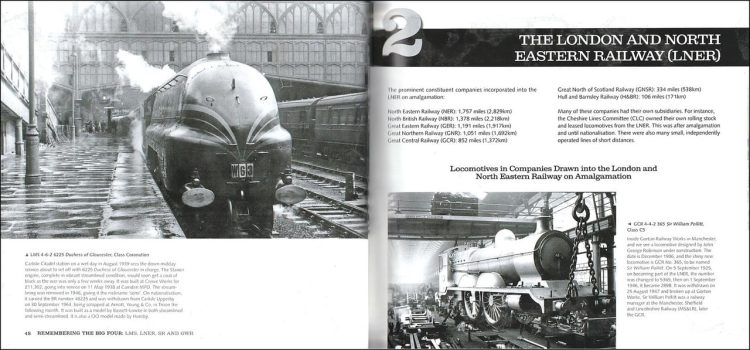
The photographs below show a variety of locomotives from the London and North Eastern Railway. At the top right is the A1 Class Pacific No, 60113 Great Northern, which is significant as it was the first locomotive with a 4-6-2 “Pacific” wheel arrangement built by the Great Northern Railway, and was the only original A1 Class locomotive not rebuilt by the London and North Eastern Railway as an A3 Class Pacific. In contrast, at the bottom right is an N2 Class 0-6-2 tank engine, a type that was commonly used on commuter trains into the early 1960s, especially out of London King’s Cross.
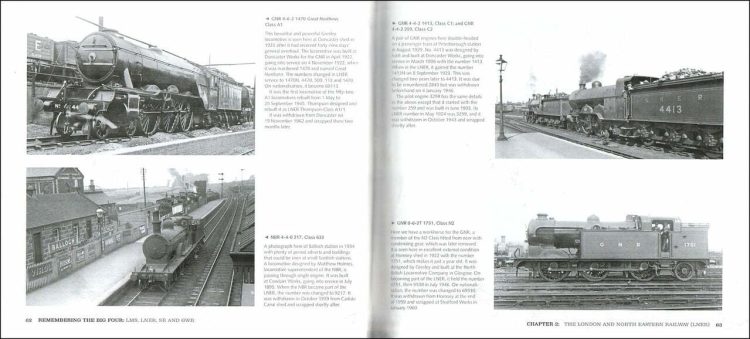
The top two photographs below were members of the most powerful class of 4-4-0s to run on Britain’s railways. They are both Schools Class locomotives, which the Southern Region also designated as Class V.
The most unusual class of locomotive to run on Britain Railways was the West Country 4-6-2 Pacifics as seen at the bottom left, which along with the identical Battle of Britain Class and the more-powerful Merchant Navy Class, were originally built with what as know as an air-smoothed casing, but were often referred to derogatorily as ‘Spam Cans’. They were later rebuilt with a more-conventional appearance.
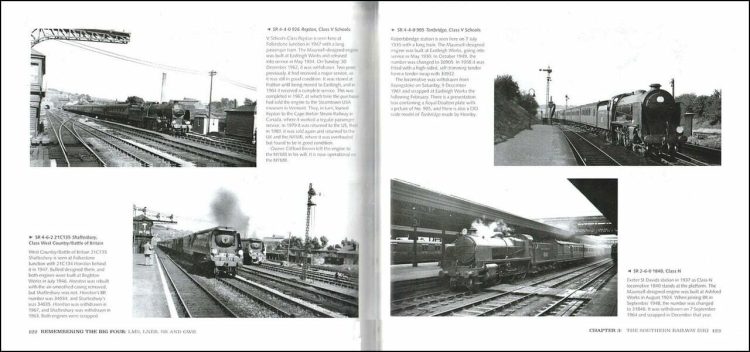
Before World War II all of the railway companies were skilled in marketing and produced striking posters as part of their campaigns. There can be no doubt about the attractiveness of the Great Western Railway’s offerings as seen on the left below. On the right below is a locomotive of the Midland & Southwestern Junction Railway that ran between Cheltenham Spa and Southampton and was absorbed into Great Western Railway at the Grouping.
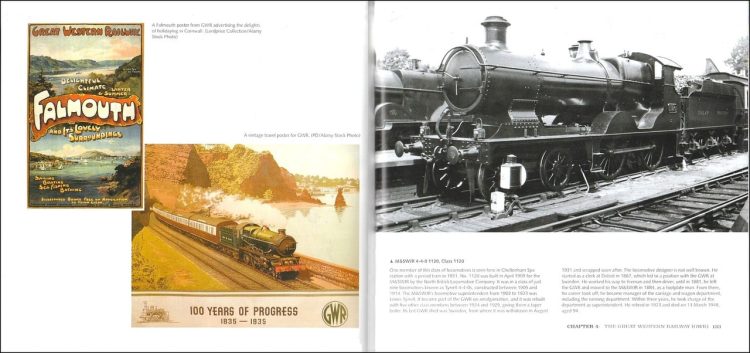
Looking decidedly ancient are the Great Western Railway locomotives seen below, with a Barnum Class 2-4-0 at the bottom-left and a 3232 Class on the right, which is notable for being photographed deep in the heart of LMS territory at Crewe, but that was because the Great Western Railway also had an engine shed there to service its locomotives used on its services to Shrewsbury. At the top right seeing is not believing, as what at first sight looks like a carriage, is a steam railmotor, which incorporated a boiler inside the carriage. A replica steam railmotor can be viewed, and occasionally ridden in, at the Didcot Railway Centre.
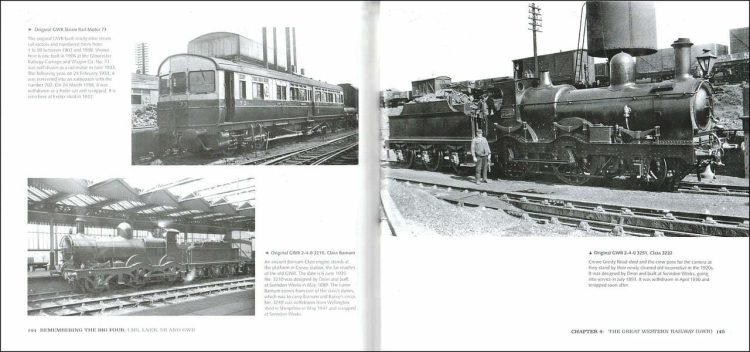
The History Press does not offer this book for sale on its website but has links to Foyles, Waterstones, and hive.co.uk. The book is also available to purchase from Amazon, which has it available for £16.17.
We would like to thank The History Press for providing RailAdvent with a copy of the book for review.




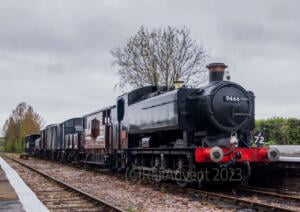

Responses
Can I buy a book of this and where and how much
Hi,
The book is available from Amazon, here https://amzn.to/3sbT4ac